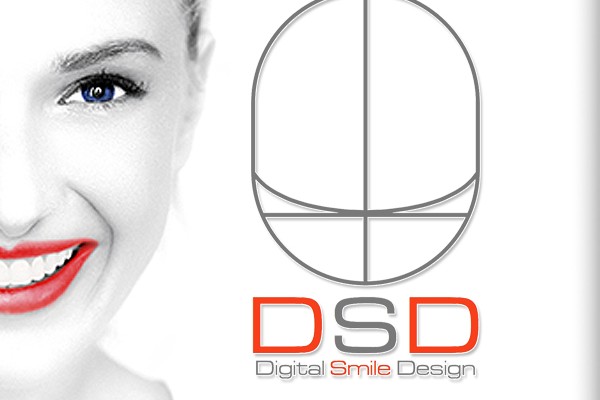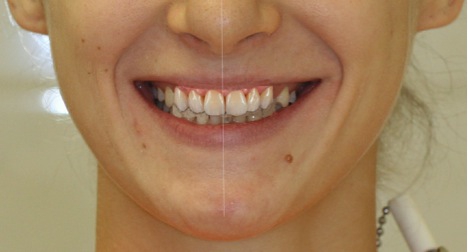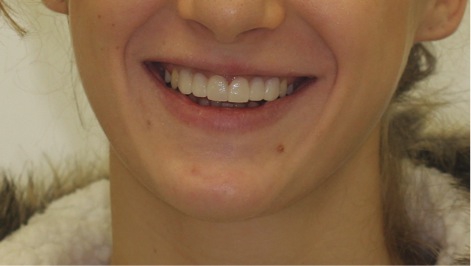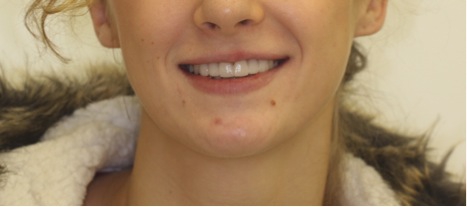Try your smile in advance
What do digital photography and graphics programs have to do with dentistry? The ultra-modern Digital Smile Design concept, which is used in the Lancet dental clinic at the planning stage of treatment, allows you to create a smile that meets the patient’s functional, aesthetic and emotional needs. Computer modeling of a smile provides an opportunity not only to see, but also to try on the result even before the start of treatment and rehabilitation. Involves the patient in the process of developing his own smile, creating a dental vision of the 21st century and an individual approach!
DSD concept creator Dr. Christian Coachman, a Brazilian dental technician who later became a doctor, received his degree in dentistry from the University of San Paolo and the certificate of dental technology at the Rocha Marmo School (San Paolo, Brazil). The last three years have been actively promoting their technology around the world.
Table of Contents
Dmitry Gershevich Lancet, head doctor of the dental clinic "Lancet":
– Dr. Christian Kochman – one of the most popular lecturers to date, you can say, lives in an airplane. He teaches dentists his practical course on virtual treatment planning and digital dental photo “Smile Design and Interdisciplinary Communication in Aesthetic Dentistry”. Thanks to this development, it became possible to combine dental health and beauty. You know how much I live, there has always been a dilemma: the doctor’s priority is to maintain dental health, and the desire of patients, especially women, to make everything beautiful (color, shape of teeth, lips to look attractive – the smile of a Hollywood star). However, what this imagined beauty will look like in a real embodiment is with you – that is the question. The doctor knows exactly how to cure you, but the idea of beauty is different for everyone.
Daniil Yuryevich Zhukov, dentist at the Lancet Clinic:
– The advantage of the DSD concept is that Dr. Coachman adapted knowledge of aesthetic dentistry and created a sequence of actions for working with digital photography.
Digital Smile Design, that is, computer simulation of a smile, consists in the following: the doctor receives a series of photographs of the patient from certain angles and then processes these images on a computer in graphic programs. So, according to some standard parameters, the proportions of the location of the teeth, in relation to the soft tissues, an optimal picture is modeled, which demonstrates how the final restoration should look.
According to the photograph, the dental technician performs wax modeling (Wax-up), which is transferred using a silicone key to the patient’s mouth – even before the dentist begins work. Thus, a person is able to see the result before the doctor touches it with at least some invasive procedure; at this stage, everything is done without grinding the teeth, without any surgical manipulations. The patient can try on and evaluate the design of his perfect smile and, if desired, adjust it.
Of course, not every doctor owns digital tools. Now DSD is a fairly common thing in the world, but still in percentage terms – the number of doctors with this technique is negligible. There are similar specialists at the Lancet Dental Clinic.
Benefits of DigitalSmileDesign: Beauty and Functionality
DSD improves diagnosis, communication, and predictability of aesthetic rehabilitation
Daniil Yurievich Zhukov:
– Computer modeling of a smile is an opportunity to improve communication between the patient, the doctor and the dental technician who does the work on the clear technical task of the doctor. Usually this happens a little differently: in most cases, a technician is an artist who is engaged in modeling according to some of his ideas, and according to the results of the fitting, the doctor sends him corrective nuances. The concept of DSD allows you to reduce the time and number of visits, as well as to avoid the end result that is not clear to the patient.
As a result, the doctor has a clear plan of action, the actual template, according to which he will work, and customize all his manipulations under it. And the technician is not guided by his own idea of the beautiful, but follows clear instructions.
The patient’s benefit is also obvious. If one of his tasks is to obtain aesthetics, it is advisable to apply the DSD concept to predict the final result and demonstrate it to the client.
Dmitry Gershevich Lancet:
– Computer modeling of a smile is an opportunity to improve communication between the patient, the doctor and the dental technician who does the work on the clear technical task of the doctor. Usually this happens a little differently: in most cases, a technician is an artist who is engaged in modeling according to some of his ideas, and according to the results of the fitting, the doctor sends him corrective nuances. The concept of DSD allows you to reduce the time and number of visits, as well as to avoid the end result that is not clear to the patient.
As a result, the doctor has a clear plan of action, the actual template, according to which he will work, and customize all his manipulations under it. And the technician is not guided by his own idea of the beautiful, but follows clear instructions.
The patient’s benefit is also obvious. If one of his tasks is to obtain aesthetics, it is advisable to apply the DSD concept to predict the final result and demonstrate it to the client.
Dmitry Gershevich Lancet:
– One must understand that a person is not symmetrical and not always the proportion of the golden ratio on his face is beautiful. After all, a person’s face is far from proportional and, if only the rules follow, flaws can clearly appear on the face (it suddenly catches your eye that the nose is not in the middle, or the fang protrudes strongly beyond the smile line) and now, to achieve the ideal, orthodontic treatment is required, although all made absolutely true and high quality. Or, for example, the doctor believes that large teeth are beautiful, and the patient is not used to it, and it doesn’t suit him. One millimeter more – one less and now a completely different picturе.
DSD allows you to still “on the shore” to adjust the interdental space so as to hide all the shortcomings and identify advantages. This is a kind of high fashion in dentistry. You do not buy a pig in a poke, as you can see the final result, although no one has touched your teeth yet. This is not even a particularly expensive thing. And applies to any restorations in the mouth.
Digital Smile Design gives the doctor the opportunity to offer the patient something that a priori already liked. This method saves both money, and effort, and time – thereby guaranteeing the absence of unpleasant surprises.
Photo No. 1: patient with missing front teeth.
Photo No. 2: computer simulation of the golden ratio reveals a suboptimal aesthetic result in the area of the left canine.
Photo 3: computer modeling with a shifted center gives harmony to a smile and hides a fang – there is no need for orthodontic treatment.
Photo No. 4: pictures for the patient to choose – which way we go.
Photo No. 5 and Photo No. 6: fitting of a plastic model Moc-up, made by a technician for a patient, to demonstrate the final result. At this stage, everything is done without grinding your teeth, without any surgical procedures.








Great content! Super high-quality! Keep it up! 🙂
I can see that you are putting a lots of efforts into your blog. Keep posting the good work.Some really helpful information in there. Bookmarked. Nice to see your site. Thanks!